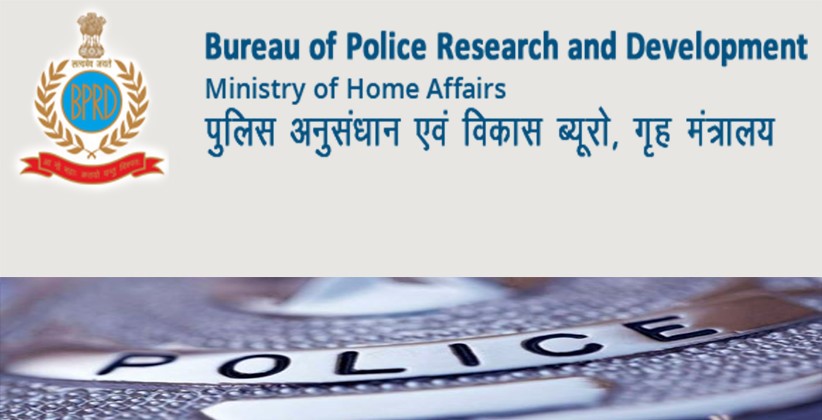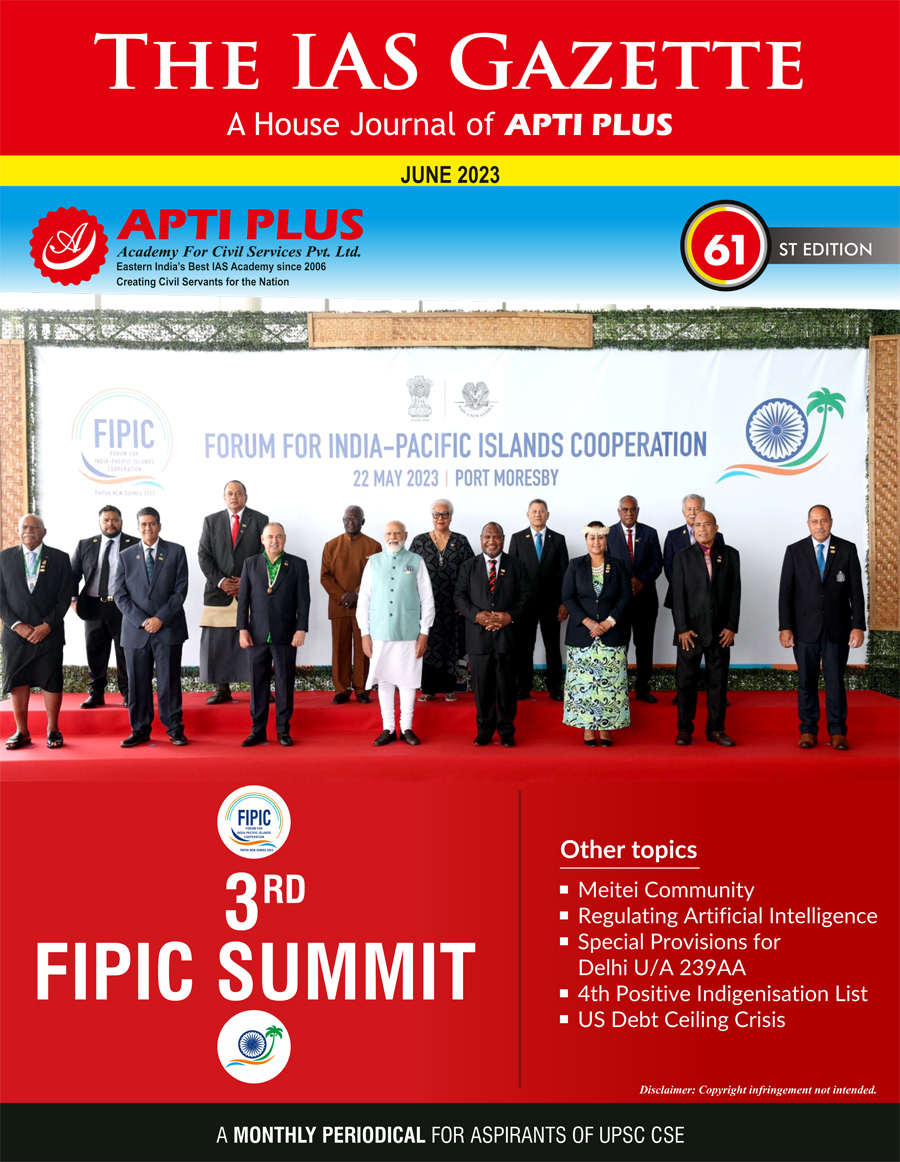National Security: Bureau of Police Research and Development

Disclaimer: Copyright infringement not intended.
Context
- In the holistic concept of national security, internal security is an extremely important part of the country’s overall national security matrix. The internal security environment in India is highly complex and challenging.
Details
- Despite these challenges, India has become stronger and today is emerging as a global leader. The evolution of the BPR&D over the last fifty years is testimony to the success of the organization, striving to fulfill the objective of professionalizing the Indian police, to serve the citizens, diligently.
- It has been mandated to identify the needs and problems of the police services in the country and initiate, stimulate and guide research in this field, in coordination with various Institutions, Organisations, Ministries, Universities, and State Police and provide inputs for policy-making.
- Policies, with a strong underpinning of researched inputs, which afford deep insight into matters, have the potential of being the panacea for the issues starting our country.
- Today, the police have to deal not only with traditional crime but modern-day cybercrime and state-sponsored terrorism. This has significantly increased the risks and responsibilities of the uniformed men and women.
- BPR&D provides our frontline defenders of national security with skill, knowledge and tools that enable them to serve our national interest better.
Background
- The Bureau of Police Research & Development (BPR&D) was set up in 1970 to identify the needs and problems of the police in the country, undertake research projects and studies, and suggest modalities to overcome problems and challenges and meet the needs and requirements of the police.
- It was also mandated to keep abreast of the latest developments in the fields of science and technology, both in India and abroad, to promote the use of appropriate technology in police work.
- Over the years, the BPR&D has also been entrusted with the responsibility of monitoring the training needs and quality of training in the States and Central Police Organisations and assisting the same, as also assisting the States in modernization of the State Police Forces and Correctional Administration.
- In the process, the BPR&D has also been tasked to assist the Ministry of Home Affairs and the CPFs, etc., in the development of Standards, Quality Requirements (QRs), etc., for various types of equipment and items about infrastructure.
- More recently, the BPR&D has also been entrusted with the responsibility of anchoring and coordinating the work of the National Police Mission.
Major Functions
Research Division
- Prevention of crime-preventive measures, their effectiveness and their relationship with crime.
- The organization, strength, administration, methods, procedures and techniques of the police forces and their modernization, police act and manuals.
- Improvements in methods of investigation, utility, and results of introducing scientific aids and punishment.
- Police Science Congress & other conferences and seminars relating to the study of police problems.
- Participation in social defense and crime prevention programs.
- Participation in the work of the United Nations in the field of prevention of crime and treatment of offenders.
Development Division
- Review of the performance of various types of equipment used by the police forces in India and development of new equipment in the following fields:
- Arms and Ammunition
- Riot Control Equipment
- Traffic Control Equipment
- Police Transport
- Miscellaneous scientific equipment and scientific aids for investigation
- Liaison with the National laboratories, Indian Ordnance Factories, various scientific organizations and institutions and public and private sector undertakings in the above fields, coordination of development programs and stimulating indigenous production of police equipment.
- Application of computer technology in various fields of police work.
- Police publicity and police publicity files, police weeks and parades.
Training Division
- To review from time to time the arrangements for police training and the needs of the country in this field in the changing social conditions and the introduction of scientific techniques in training and police work and to formulate and coordinate training policies and programs in the field of police administration and management.
- To help devise new refresher, promotion, specialist and orientation courses considered necessary for the different grades and kinds of police officers.
- Work relating to the establishment of the Central Medico-Legal Institute and the Central Traffic Institute.
- To prepare, in coordination with the police training institutions, standard manuals, textbooks, pamphlets, lecture notes, case studies, practical exercises and other educative literature for use in these institutions.
- To distribute relevant literature to Inspectors General/DIG(Training) in the States for circulation to officers to familiarise them with training concepts and to strengthen training consciousness among the higher ranks.
Correctional Administration
- Analysis and study of prison statistics and problems of general nature affecting Prison Administration.
- Assimilation and dissemination of relevant information to the States in the field of Correctional Administration.
- Coordination of Research Studies conducted by RICAs and other Academic/Research Institutes in Correctional Administration and frame guidelines for the conduct of research studies/surveys in consultation with the State Governments.
- To review training programs keeping in view the changing social conditions, the introduction of new scientific techniques and other related aspects.
- To prepare uniform Training Modules including courses, syllabi, curriculum, etc. For providing training at various levels to the Prison staff in the field of Correctional Administration.

What are the challenges faced by Police Forces in India?
Increased political influence:
- In India, the political executive (i.e., ministers) has the power of superintendence and control over the police forces to ensure their accountability.
- However, the Second Administrative Reforms Commission has noted that this power has been misused, and ministers have used police forces for personal and political reasons.
Lack of infrastructure:
- As per the CAG (Comptroller and Auditor General of India) and the BPRD (Bureau of Police Research and Development), the weapons used by lower police forces are obsolete and cannot match modern weaponry used by anti-social elements.
- Police vehicles are in limited supply, according to audits. New automobiles are frequently employed to replace older vehicles, and drivers are in short supply.
- The central government launched the POLNET (Police Telecommunication Network) project in 2002 to connect the country’s police and paramilitary forces through a satellite-based communication network that will be substantially faster than the current radio communications system. However, audits have revealed that the POLNET network is non-operative in various states.
Crime Investigation:
- Crime per lakh population has increased by 28% over the last decade (2005-2015).
- The police do not have the necessary training or expertise to undertake professional investigations. They also lack legal understanding (on issues such as the admission of evidence), and their forensic and cyberinfrastructure is both weak and antiquated.
- The quality of crime investigation has reduced due to higher crime rates, low conviction rates, several vacancies, and overburdened police staff.
Budgetary constraints:
- While state police forces are responsible for maintaining law and order and investigating crimes, central forces assist them with intelligence and internal security challenges (e.g., insurgencies).
- Expenditure on police accounts for about 3% of the central and state government budgets.

What are the suggestion and recommendations for Police reforms?
Exclusive cadre for investigation:
- There should be separate cadre needs to be established in the police system which exclusively looks into the investigation matters apart from public order.
State Security Commission (SSC):
- In Prakash Singh & Ors. v. U.O.I. & Ors, the S.C. given direction to State Governments that, “Constitute a State Security Commission (SSC) to:
- Ensure that the State government does not exercise unwarranted influence or pressure on the police.
- Lay down broad policy guidelines and
- Evaluate the performance of the State police.
Specialized Investigating Units:
- To ensure better functioning of the police when it comes to investigating, the Law Commission suggests the setting up of separate and specialized investigating units within the police force which are solely responsible for the investigation of crimes.
- Limiting the political executive’s power of superintendence over police forces.
- According to the Second Administrative Reforms Commission, this jurisdiction should be limited to boosting professional efficiency and ensuring that police officers follow the law.
- The Supreme Court and the Second Administrative Reforms Commission have both stated that an independent complaints authority is needed to investigate allegations of police misconduct and ensure accountability.
Community Policing Model:
- One of the ways of improving the Public-Police Relationship is through the community policing model. Community policing requires the police to work with the community for the prevention and detection of crime, maintenance of public order, and resolving local conflicts, to provide a better quality of life and sense of security.
|
Janamaithri Suraksha in Kerala
This project is an initiative of the Kerala Police to facilitate greater accessibility, close interaction and better understanding between the police and local communities. For example, Beat Constables are required to know at least one family member of every family living in their beat area and allocate some time to meet with people outside the police station every week. Janamaithri Suraksha Committees are also formed with municipal councilors, representatives of residents’ associations, local media, high schools and colleges, retired police officers, etc. to facilitate the process.
|
Directions of the Supreme Court in Prakash Singh v. Union of India (2006):
- Every state should establish a state security commission to set policies for police operations, review police performance, and ensure that state administrations do not exert undue influence over the police.
- Police complaints authorities should be established at the state and district levels to investigate complaints of serious misconduct and abuse of authority by police officers.
- To enable a faster investigation, better competence, and stronger public relations, separate the investigative and law enforcement officers.

Conclusion
- Prime Minister Narendra Modi has in the past called for making the police a SMART force., Strict and Sensitive, Modern and Mobile, Alert and Accountable, Reliable and Responsive, Tech Savvy and Trained.
- Various studies indicate that when police officers treat citizens with dignity, allow them an equal voice in interactions and are guided by considerations of transparency and accountability, it strengthens people’s compliance with laws, ameliorating conditions for the commission of crimes.
- While re-imaging a police force that performs its functions without fear or favor is a long haul, it is about time that positive steps are taken in the right direction to initiate this change.
|
Model Police Act, 2006
Key features of the Model Police Act, of 2006 include:
Organization and recruitment: Each state will have one police service, which shall be headed by the DGP. Direct recruitments to subordinate ranks (i.e. below Deputy SP) will be made through a state-level Police Recruitment Board. Recruitment to officers’ ranks will be through the Union Public Service Commission or State Public Service Commission.
Responsibilities: The responsibilities of the police service will include:
- Enforcing the law impartially, and protecting life, liberty, and human rights,
- Preserving public order, and preventing terrorist, militant and other activities affecting internal security,
- Protecting public properties,
- Preventing and investigating crimes,
- Providing help in natural or man-made disasters,
- Collecting intelligence, etc. In police stations in urban areas and crime-prone rural areas, investigation of heinous and economic crimes (e.g., murder, serious cases of cheating) will be carried out by a special crime investigation unit, headed by an officer of at least of the rank of a sub-Inspector. Officers of these units will generally not be diverted for any other duty.
|
CITATIONS:
https://sansadtv.nic.in/episode/national-security-bureau-of-police-research-and-development-09-july-2023
https://sansadtv.nic.in/episode/perspective-overcoming-policing-challenges-23-january-2023
https://en.wikipedia.org/wiki/Bureau_of_Police_Research_and_Development
https://blog.ipleaders.in/problems-faced-police-system-india-solutions/





